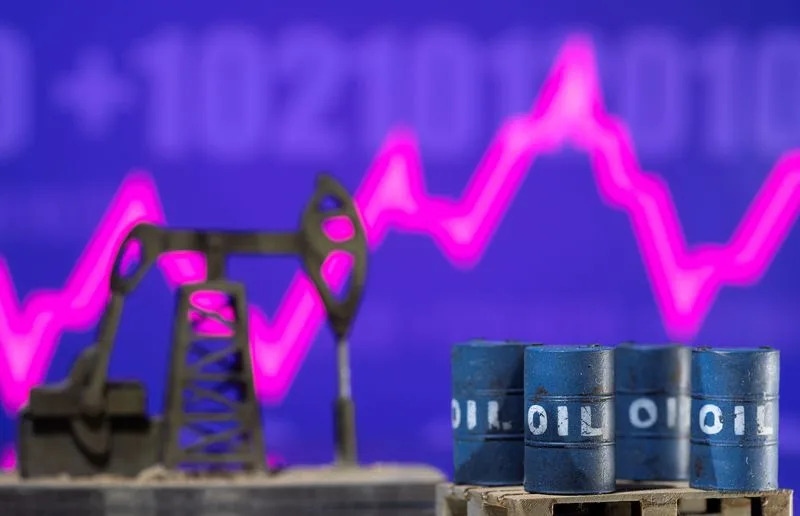By Erwin Seba
HOUSTON (Reuters) – Oil prices settled higher on Tuesday, driven by concerns over limited supply from Russia and Iran due to Western sanctions and expected higher Chinese demand.
Brent Crude Futures Settle at $77.05 a Barrel
Brent crude futures settled at $77.05 a barrel, up 75 cents, or 0.98%. U.S. West Texas Intermediate (WTI) crude finished at $74.25 a barrel, up 69 cents, 0.94%.
Market Analysis
Traders were looking to the Chinese stimulus plans to drive growth as supplies are tight following the Christmas and New Year’s holidays, said Forex market analyst Razan Hilal.
"While the market is currently range-bound, it is recording gains on the back of improved demand expectations fueled by holiday traffic and China’s economic pledges," Hilal said in a morning note. "However, the primary trend remains bearish."
Supply Disruptions and Tight Supplies
Some market participants have apparently started to price in small supply disruption risks on Iranian crude exports to China, said UBS analyst Giovanni Staunovo.
Concern over sanctions tightening supply has translated into increased demand for Middle Eastern oil, reflected in a rise in Saudi Arabia’s February oil prices to Asia, the first such increase in three months.
Supply Disruptions on the East Coast of China
On Monday in China, Shandong Port Group issued a notice banning U.S.-sanctioned oil vessels from its network of ports, three traders said, potentially restricting blacklisted vessels from major energy terminals on China’s east coast.
Shandong Port Group oversees large ports on China’s east coast, including Qingdao, Rizhao and Yantai, which are major terminals for importing sanctioned oil.
Heating Oil Demand Boosted by Cold Weather
Meanwhile, cold weather in the U.S. and Europe boosted heating oil demand, though oil price gains were capped by global economic data.
Euro zone inflation accelerated in December, an expected blip that is unlikely to derail further interest rate cuts from the European Central Bank.
Inflation and Interest Rate Cuts
"Higher inflation in Germany raised suggestions the ECB may not be able to cut rates as fast as hoped across the euro zone," said Panmure Liberum analyst Ashley Kelty.
Technical Indicators and Market Sentiment
Technical indicators for oil futures are now in overbought territory and sellers are keen to step in again to take advantage of the strength, tempering additional price advances, said Harry Tchilinguirian, head of research at Onyx Capital Group.
Market participants await more economic data, including the U.S. December non-farm payrolls report on Friday.
Physical Market and Demand
"We have a very tight physical market and see demand exceeding supply," said Phil Flynn, senior analyst with the Price Futures Group. "That should lead to more drop downs of inventories around the globe."
Conclusion
Oil prices settled higher on Tuesday due to concerns over limited supply from Russia and Iran due to Western sanctions and expected higher Chinese demand.
The physical market remains tight, with demand exceeding supply, which is likely to lead to further price increases in the coming days.
Market participants will be watching closely for more economic data, including the U.S. December non-farm payrolls report on Friday, to gauge the impact of the current supply-demand imbalance.
Sources:
Related Articles:




